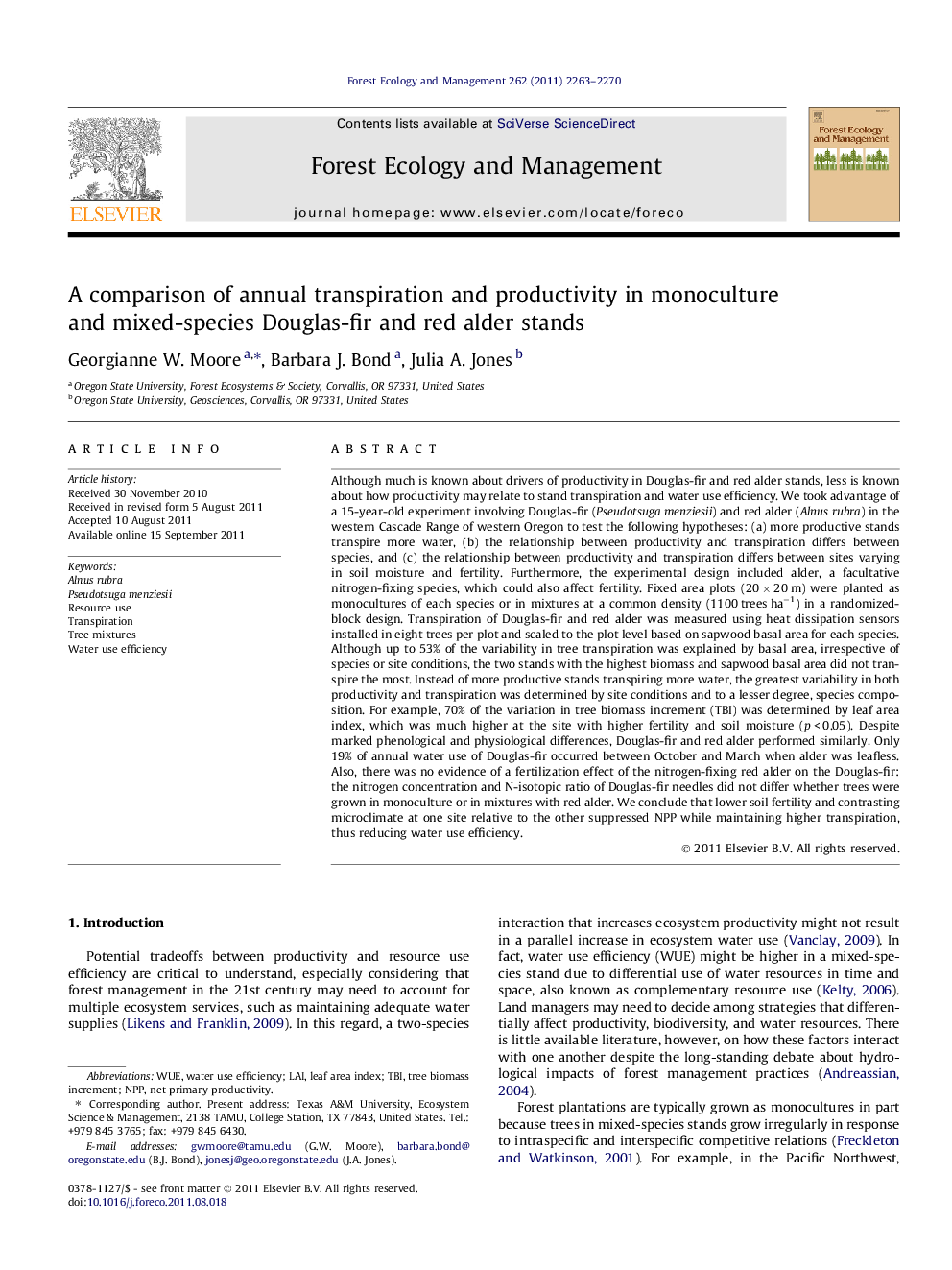| کد مقاله | کد نشریه | سال انتشار | مقاله انگلیسی | نسخه تمام متن |
|---|---|---|---|---|
| 87812 | 159267 | 2011 | 8 صفحه PDF | دانلود رایگان |

Although much is known about drivers of productivity in Douglas-fir and red alder stands, less is known about how productivity may relate to stand transpiration and water use efficiency. We took advantage of a 15-year-old experiment involving Douglas-fir (Pseudotsuga menziesii) and red alder (Alnus rubra) in the western Cascade Range of western Oregon to test the following hypotheses: (a) more productive stands transpire more water, (b) the relationship between productivity and transpiration differs between species, and (c) the relationship between productivity and transpiration differs between sites varying in soil moisture and fertility. Furthermore, the experimental design included alder, a facultative nitrogen-fixing species, which could also affect fertility. Fixed area plots (20 × 20 m) were planted as monocultures of each species or in mixtures at a common density (1100 trees ha−1) in a randomized-block design. Transpiration of Douglas-fir and red alder was measured using heat dissipation sensors installed in eight trees per plot and scaled to the plot level based on sapwood basal area for each species. Although up to 53% of the variability in tree transpiration was explained by basal area, irrespective of species or site conditions, the two stands with the highest biomass and sapwood basal area did not transpire the most. Instead of more productive stands transpiring more water, the greatest variability in both productivity and transpiration was determined by site conditions and to a lesser degree, species composition. For example, 70% of the variation in tree biomass increment (TBI) was determined by leaf area index, which was much higher at the site with higher fertility and soil moisture (p < 0.05). Despite marked phenological and physiological differences, Douglas-fir and red alder performed similarly. Only 19% of annual water use of Douglas-fir occurred between October and March when alder was leafless. Also, there was no evidence of a fertilization effect of the nitrogen-fixing red alder on the Douglas-fir: the nitrogen concentration and N-isotopic ratio of Douglas-fir needles did not differ whether trees were grown in monoculture or in mixtures with red alder. We conclude that lower soil fertility and contrasting microclimate at one site relative to the other suppressed NPP while maintaining higher transpiration, thus reducing water use efficiency.
► We compared forest stands planted with monocultures and mixtures of two species.
► The two study sites contrasted in nutrient availability and microclimate.
► Douglas-fir and red alder transpiration and productivity differed by site.
► Water use efficiency was determined by site conditions, not species composition.
► Total stand biomass was the most important within-site determinant of transpiration.
Journal: Forest Ecology and Management - Volume 262, Issue 12, 15 December 2011, Pages 2263–2270